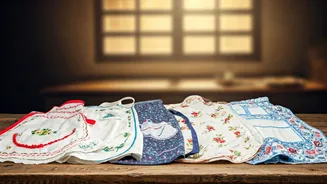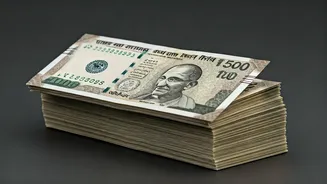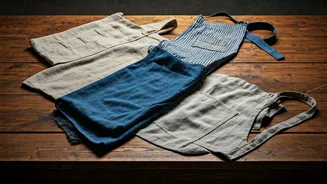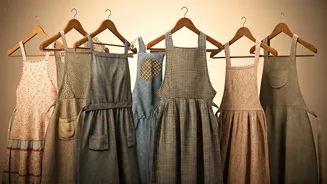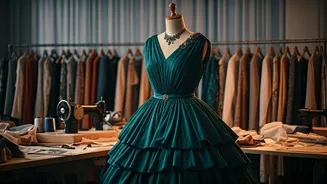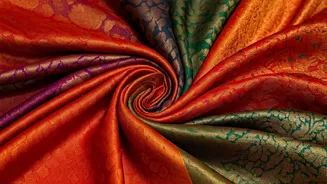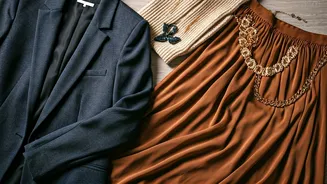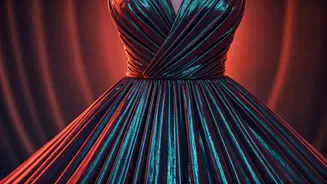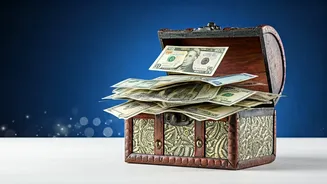Ancient Origins Revealed
Aprons, in their simplest form, can be traced back to ancient civilizations. Initially, these garments served primarily functional purposes, offering protection
to clothing from various activities like cooking, farming, and crafting. In ancient Egypt, for example, aprons were worn by both men and women, often crafted from linen or leather. These early aprons were more akin to basic protective coverings rather than the decorative items we see today. Their primary function was to safeguard the wearer’s clothing from dirt, spills, and the rigors of daily tasks. The materials used reflected the available resources and the prevalent labor practices of the time. The very concept of aprons showcases the early human need for practicality and the preservation of resources.
Aprons in Medieval Times
During the medieval period, aprons continued to be an essential part of daily life, particularly within the artisan and domestic spheres. These aprons were often constructed from coarse fabrics such as linen or wool, chosen for their durability and ease of cleaning. Artisans, including blacksmiths, carpenters, and weavers, relied on aprons to protect themselves and their clothing from occupational hazards. The design of aprons in this era was primarily utilitarian, prioritizing function over fashion. They were typically rectangular pieces of fabric tied around the waist. Aprons within the domestic sphere had a dual purpose: safeguarding clothing while also serving as pockets for carrying small items or wiping hands. The aprons were thus integrated into the tasks of the day, reflecting the pragmatic approach to clothing and work.
The Rise of Fashion
As time passed, aprons began to evolve beyond their purely functional origins, gradually embracing elements of fashion and social expression. The 18th and 19th centuries witnessed a surge in decorative aprons, especially within the upper classes. These aprons, adorned with lace, embroidery, and other embellishments, became a symbol of status and wealth. They were no longer solely confined to the kitchen; women of leisure wore them in social settings. This shift reflected the changing societal norms and the emergence of fashion consciousness. Materials like silk and finer linens were introduced, transforming aprons into elegant accessories. This period saw aprons transitioning from tools of practicality to statements of style and societal standing.
Aprons in the Victorian Era
Victorian aprons encapsulated the essence of a rapidly changing society. Women in the Victorian era donned various apron styles, each reflecting their social standing and the tasks they performed. The 'house apron,' was a standard garment crafted from durable cotton or linen and was designed to protect the wearer's clothing during housework. More decorative aprons, often made from lace or silk, were worn for social visits or special occasions. Aprons were not just protective garments; they became an important fashion accessory. The apron's design reflected the era's aesthetic preferences, with elaborate embellishments and detailed craftsmanship. The apron also served as a means of communication, with specific designs or colors conveying information about the wearer's marital status or social class. The Victorian era saw the apron's evolution from a simple protective garment to a complex symbol of identity.
Aprons in the Modern Age
In the modern era, aprons have continued to evolve, adapting to changes in fashion, technology, and lifestyle. While the basic function of protection remains, aprons now embrace a wide range of styles, materials, and designs. They are still a staple in the culinary world, with chefs and home cooks alike utilizing aprons for both functionality and aesthetic appeal. Aprons have become a canvas for self-expression, with various colors, patterns, and personalized designs available. The rise of DIY culture and the popularity of crafting and gardening have further increased the demand for aprons. In professional settings, aprons serve both a practical and branding function, with restaurants and businesses utilizing them as part of their uniforms. In short, the apron continues to reinvent itself, remaining an adaptable item of clothing that serves both function and fashion.
